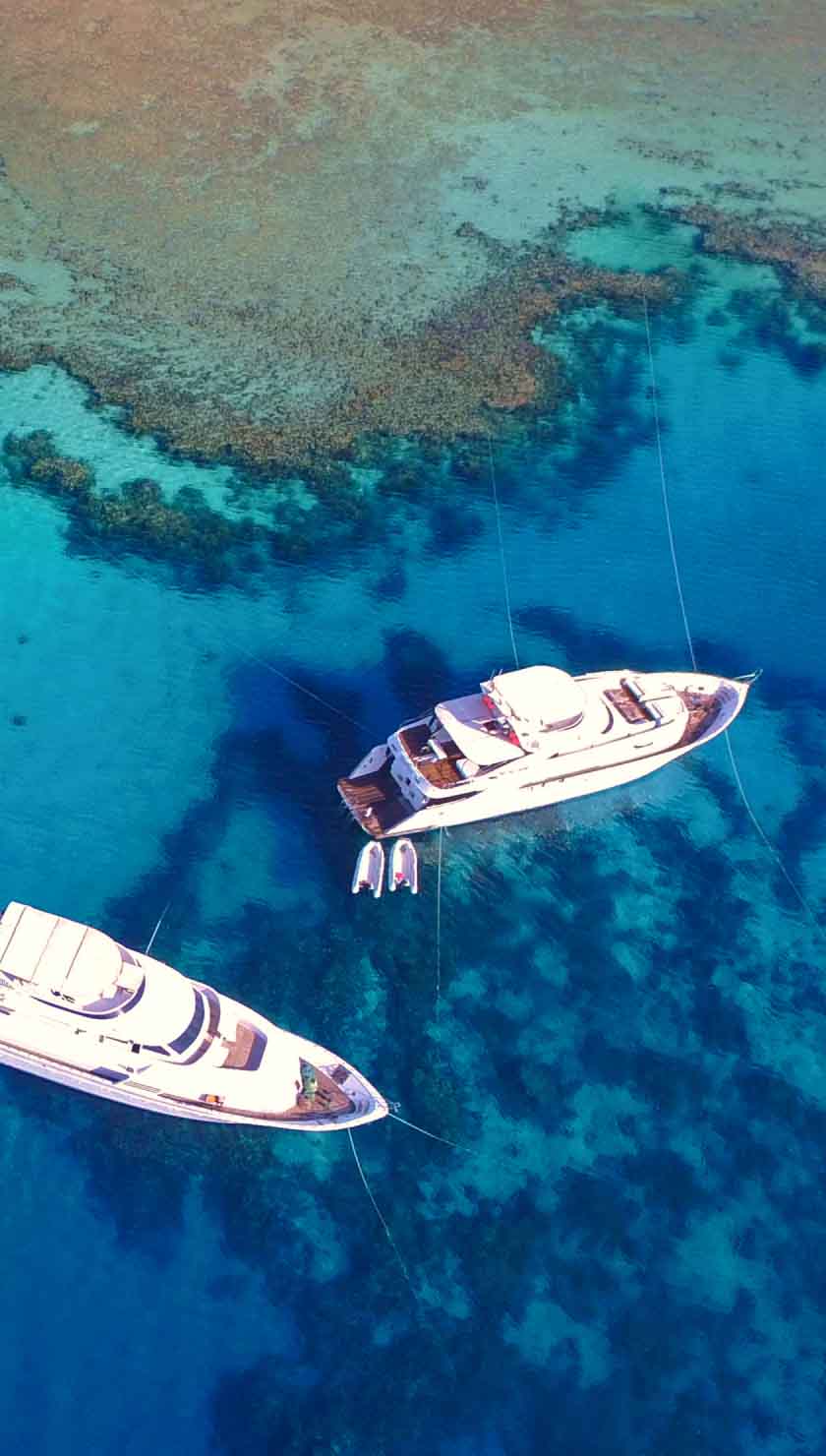Marine life in Palau
The world's first shark sanctuary was established here in Palau, in September 2009, banning all commercial shark fishing within the waters of the EEZ (Exclusive Economic Zone). This area protects a very sizeable 600 000 square kilometres of ocean from unscrupulous fisherman, an area of ocean considerably bigger than Spain.
Sharks are apex predators who curate the oceans, often acting as a makeshift indicator of health. They maintain a general order within the reef and ensure that life is sustainable. Sharks do this by being efficient predators, targeting weak, sick and slow fish. This helps to prevent the spread of disease and ensures that numbers of competitive predators remain in check. Consequently, the health and diversity of the entire reef is greatly enhanced.
Naturally, numbers of oceanic whitetip and blacktip reef sharks, and even hammerheads, are very high, allowing for a thrilling snorkelling experience if so desired. Itís also possible to see eagle rays, dolphins, manta rays and whale sharks, as well as green and hawksbill turtles.
Best snorkel sites in Palau
Jellyfish Lake is perhaps one of the best snorkel sites in Palau, situated within the Rock Islands. It is possible to see the daily migration of millions of golden jellyfish. Snorkeling among these graceful creatures is perfectly safe as they have evolved to lose any potency to their sting in the absence of natural predators.
Nikko Bay is famous for holding some very large Napoleon wrasse. The bay sits in crystal clear waters, with beautiful reef patches and small pinnacles that are easily accessible from the shore. Anthias and blue chromis are the most common species here, but also several species of small moray eel can be seen hiding within the coral.
Best time to snorkel in Palau
Palau sits within a tropical climate, featuring fairly heavy rain during the year. However, the rain is usually short-lived and the majority of each day is wonderfully sunny, providing perfect snorkeling conditions. Between the months of July and October is when the heaviest rains fall, and visibility typically reduces to around 50 to 80 feet (15 to 25 m) from 100 to 130 feet (30 to 40 m). It is possible to visit all year around, but the best time to go on your snorkel trip to Palau is between November and May, when conditions are at their calmest, especially close to the shore. A little beyond the protection offered by the islands, surface conditions can be choppy, and currents fairly strong. Water temperatures remain at around 84 Fahrenheit (29C) during the year, dipping slightly to 79 Fahrenheit (26C) in March.
The best time to see manta rays and whale sharks is between January and April. Green sea turtles and hawksbill turtles are fairly prevalent throughout the year, although they are most often seen during April and July when they breed.
How do I get to Palau
Palau international airport is fairly easy to reach, with direct international flights available from Tokyo-Narita, Taipei, Manila and Seoul, facilitating a hassle-free journey to your snorkel tour in Palau. Most citizens can visit for up to 90 days as a tourist without previously applying for a visa, while certain citizens, such as US citizens, can enter for up to year. As with any international travel, ensure you check any immigration requirements well in advance of your intended date of travel to avoid any inconvenience. Numerous Micronesia liveaboards offer snorkeling trips that will visit the Palau area an are a great way to see this amazing part of the world.














